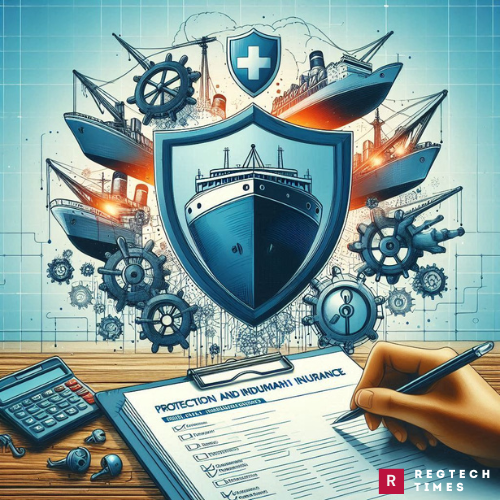A recent maritime collision off the coast of Singapore has brought to light the complex insurance challenges facing vessels involved in the shadow fleet of oil tankers, particularly those dealing with Iranian crude. The incident, involving the Singapore-flagged Hafnia Nile and the Sao Tome and Principe-flagged Ceres I, highlights the intricate interplay between maritime operations and international sanctions.
The Collision Incident
On July 19, 2024, a significant maritime collision occurred between the Hafnia Nile and the Ceres I, approximately 55 kilometers northeast of Pedra Branca, Singapore. The collision led to both vessels catching fire. The Hafnia Nile, which was transporting naphtha, suffered engine damage but managed to avoid a major oil spill. Instead, a light oil sheen was observed, which was attributed to damage to the bunker tank of the Hafnia Nile. Emergency response efforts included deploying oil booms and tugboats to manage the sheen and secure the vessel.
The Iranian Oil Connection
Although Ceres I was empty at the time of the collision, its history of transporting Iranian oil adds complexity to the situation. Ship tracking data reveals that the Ceres I has carried Iranian crude multiple times in recent years. In March 2024, it loaded Iranian oil off Iran’s Kharg terminal, with previous voyages including several shipments of Iranian and Venezuelan crude.
This connection to Iranian oil is significant due to Western sanctions targeting Iranian crude. These sanctions restrict transactions and financial dealings involving Iranian oil, posing potential legal and financial risks for companies and insurers. The involvement of a vessel with such a history in a high-profile collision raises concerns about how insurers will handle the claims process.
Insurance Complications from the Collision
Maritime insurance for incidents typically consists of two main types of coverage: Protection and Indemnity (P&I) insurance and hull and machinery insurance. P&I insurance addresses third-party liabilities such as environmental damage and personal injury, whereas hull and machinery insurance provide protection against physical damage to the vessels.
In this case, the Hafnia Nile is insured by Norwegian P&I insurer Gard, one of the world’s largest P&I providers. Gard has pledged support for the vessel’s operator, BW Group, but specifics regarding coverage and claims have not been detailed. On the other hand, the Ceres I’s P&I coverage is with an international insurer outside the top 12 providers, and its hull and machinery insurance are from a Chinese insurer.
Sanctions and Claims Process
The primary challenge in this collision is the potential impact of sanctions on the insurance claims process. Sanctions targeting Iranian oil create a complex regulatory environment for insurers. If the Ceres I’s involvement with Iranian crude is scrutinized, insurers might face pressure to deny coverage or report potential breaches of sanctions.
Jonathan Moss, head of transport at the law firm DWF, notes that the collision involving the Ceres I could set a dangerous precedent. While neither the vessel nor its owners are presently subject to Western sanctions, the Ceres I’s historical cargo adds complexity to the insurance situation. Moss highlights that insurer, particularly those in jurisdictions with stringent sanctions rules like the London market, might invoke sanctions exclusion clauses. This could lead to delays or denials of coverage, complicating the claims process.
The claims process for such collisions generally involves detailed assessments and investigations. Each party typically appoints its own loss assessor to evaluate the damage, establish liability, and submit claims to insurers. In this case, the costs could include vessel repairs, towing operations, salvage efforts, and surveyor fees. However, the involvement of sanctioned oil complicates these claims, potentially leading to protracted disputes and legal challenges.
Implications for the Maritime Industry
The Hafnia Nile and Ceres I collision highlights the growing risks associated with the shadow fleet—tankers operating in the gray areas of international sanctions. As more vessels engage in the covert transport of sanctioned oil, insurers, ship operators, and regulators must navigate increasingly complex legal and financial landscapes.
The incident serves as a reminder of the challenges faced by the maritime industry in managing the intersection of shipping, sanctions, and insurance. As the global regulatory environment evolves, industry stakeholders must remain vigilant and prepared to address the multifaceted issues arising from such collisions.
The collision of the Hafnia Nile and Ceres I not only highlights immediate insurance concerns but also highlights the broader implications for the global maritime industry, particularly in the context of sanctioned oil trades. The evolving nature of international sanctions and their impact on insurance coverage will likely continue to shape the industry’s approach to risk management and compliance.


